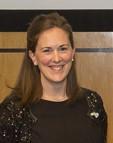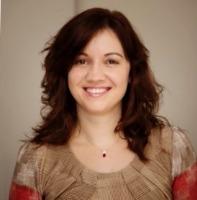Blog
Unless otherwise stated, content is shared under CC-BY-NC Licence
Minimum Preservation Tool (MPT)
John Beaman is the Preservation Repository Manager at the British Library
Many institutions have significant digital content stored outside of a fully-fledged preservation repository system. The content may be waiting for a backlog of other material to be cleared, content-specific pre-ingestion processes to be developed, or even for a preservation repository system to be implemented at the institution. Often the content is stored on standard network storage made available by the institute’s IT department, or on offline storage such as external USB hard drives. This content is inherently at risk since it is not protected by the full range of digital preservation processes within a preservation repository system such as file fixity checking. The longer content remains in this state, the greater the risk of it coming to harm. In response to this, the British Library’s Digital Preservation Team has developed the Minimum Preservation Tool (MPT), a collection of utilities written in Python that can be used to create an interim preservation storage solution, providing a basic minimum level of file preservation in order to reduce risks to content currently stored outside of a preservation repository system.
Who wants to work with us on EDRMS Preservation?
Back in April I introduced you to the EDRMS task force.
Our initial plan was to meet for six months and to carry out some of the following activities:
Preserving semi-current records - why are we worrying?
Last week the DPC held an online briefing day on the topic of Preserving Semi-current Records and we heard from a range of speakers who were all facing or considering the challenge of preserving semi-current or semi-active records.
Defining what a semi-active or semi-current record actually is was one of the first challenges of the day and perhaps differs in different contexts and disciplines. Kevin Ashley from the Digital Curation Centre described them as ‘the undead’ - records that are still with us but not quite alive. There is an implication of less use and perhaps greater neglect.
Horses for (Digital Preservation) Courses
Colin Armstrong is a Disc Imaging Technician for the British Library.
This blog post has been written in Scots - for those unfamiliar with the language, you may find the Dictionary of the Scots Language handy.
Since lockdown aroon mid-March, like a number o’ folks ma workin’ habits have changed dramatically. Ah’ve been unable to carry oot ma usual role in any normal capacity, and am mostly confined tae remote workin’ fae haim. Imaging disks as pairt o’ the Flashback Project for the British Library Digital Preservation team at Boston Spa is ‘oot the windae’, and has been temporarily swapped fir home learning, webinars, and online courses (and occasionally screein' blog introductions in Scots). Ah’ve completed 18 courses and attended roughly 15 conference or webinar-type events tae date; but which have topped the list for improvin’ my digital preservation knowledge, professional development, and mayhap fir the team in general? Let’s take a wee gander eh?
What I wish I knew about Digital Preservation: Part II
Firstly, a huge thank you to the International Council on Archives for inviting us to co-host the ‘What I Wish I Knew... Webinar’ to celebrate digital preservation day on International Archives Week! It was so popular and so well attended that we ran out of time before we even made a dent in the number of questions submitted to our panellists, so as promised we’ve put our thinking caps back on and answered some more in this blog post.
Watch the webinar again
Is digital preservation bad for the environment? Reflections on environmentally sustainable digital preservation in the cloud
Matthew Addis is the Chief Technology Officer at Arkivum.
Concerns are frequently raised that the way that humanity generates and uses data is simply not environmentally sustainable and is a significant contributor to greenhouse emissions and climate change. Archives and other organisations who hold and provide access to digital content are justifiably concerned about the part they play and how they can be more environmentally sustainable.
Ingesting Web archives into Digital preservation systems
Roxana Maurer is the Digital Preservation Co-ordinator at the National Library of Luxembourg (BnL).
At the National Library of Luxembourg (BnL), we are in the midst of ingesting our Web archive into our Digital Preservation system. Or I should better say trying to ingest… Web archives are different in so many ways from more “traditional” digital content like PDFs or TIFFs, that they come with many challenges and that includes the transfer to a digital preservation system. I would like to present here some of the challenges encountered at the BnL these past weeks, as an introduction to the special meeting of the DPC Web Archiving & Preservation Working Group on the 10th of June 2020.
Connecting the Bits 2020: The new normal?
Connecting the Bits has always had two objectives:
-
To provide members with a face to face networking opportunity, facilitating good productive chat and knowledge exchange
-
To gather information from members which will inform the development of a program of DPC activities for the following year.
Conscious that the growth of the Coalition meant that a large proportion of the members would be unable to attend in person and contribute to either of these objectives, last year we trialled an online version of this process. While the information required by the DPC was gathered successfully, members missed the opportunity to network and share ideas with each other – so we had grand plans for a return to the face-to-face networking unconference event(s) for 2020!
Let's do it together
Rachel MacGregor is a Digital Preservation Officer at the Modern Records Centre at the University of Warwick.
When I added a note to my diary to remind myself to write a blog piece for the Digital Preservation Coalition I thought I would write about what I was working on at the time - maybe policy writing? Perhaps a tricky file format or some musings on processing workflows*. However as I sit down to write looking out across my suburban cul-de-sac and not at my digital curation workstation I am going to reflect on what I see as my main challenges in working in digital preservation over the coming months (and longer probably).
Try a Little Tenderness
May 18th- 24th 2020 is Mental Health Awareness Week here in the UK, and now, more than ever, it seems apt to turn a spotlight to these issues. This week last year, I wrote a blog post about my own struggles with anxiety and depression, and how they affect my work on a day to day basis. While I now have well established coping mechanisms that help me manage my mental health, the Coronavirus pandemic, and the resulting lockdown, bring with them a whole range of new challenges and I thought I’d write a little about my own experiences so far.




















































































































































